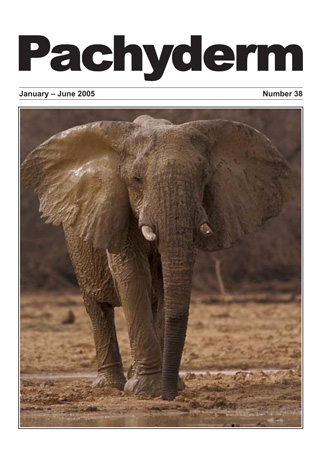Less room for a small population of elephants in severely encroached Mikeno massif, southern Virunga National Park, Democratic Republic of Congo
DOI:
https://doi.org/10.69649/pachyderm.v38i1.1228Abstract
Although poaching seems to be the most urgent threat in Virunga NP, any elephant conservation strategy needs to address expanding human activity and incursions into the park's Mikeno forest zone. Antipoaching operations seized a substantial number of weapons, dismantled several hundred snares, and led to the arrest of a few people. But the biodiversity of the Mikeno forest zone, which probably contains about 75 elephant (in an area which could sustain 120. Barnes. 1990), is at risk if hunting, deforestation, and uncontrolled livestock grazing and cultivation are not curbed in the immediate future. Increasing human population land use needs in this area are compounded by the fact that the park lies in a border region recently affected by civil wars. The authors recommend that DR Congo and Rwanda ratify the Lusaka Agreement Task Force, an action that would provide for assistance and coordination in law enforcement . They suggest the forest corridor at Mwaro, an 800 metre corridor used by both elephants and buffalo, which allows animals to move from the Mikeno section to other sections of the park is vital in the maintenance of genetic diversity.
Downloads
Published
How to Cite
Issue
Section
License
Copyright (c) 2005 Leonard Kakira Mubalama, Deo Mbula

This work is licensed under a Creative Commons Attribution-NonCommercial 4.0 International License.




